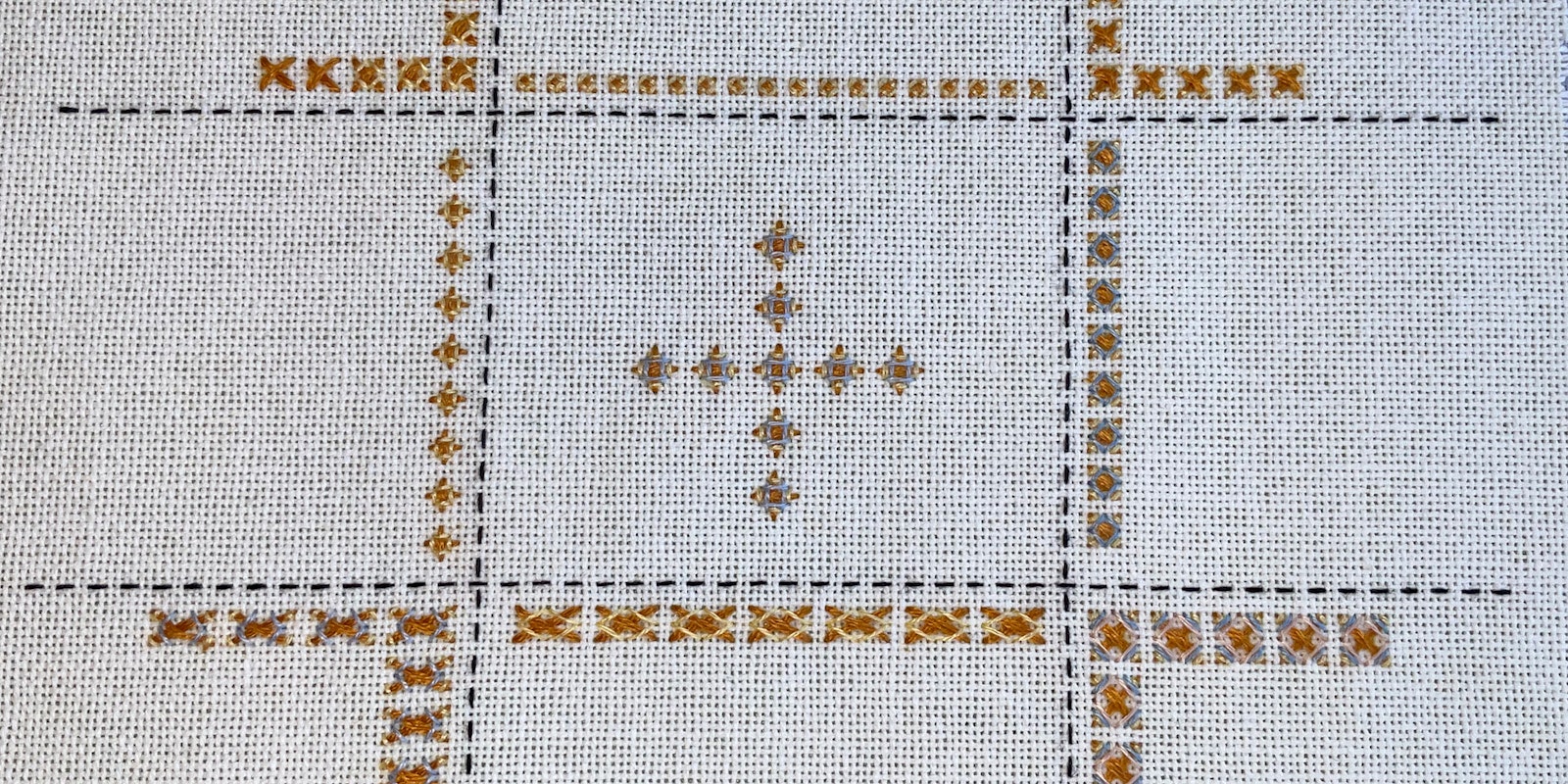The distinctively textured rice stitch is a member of the very large cross-stitch family, and it has numerous variations. Historically, this easy decorative stitch has been known as the cross corners cross stitch, boss, squared boss, or William and Mary stitch. Also, the name rice stitch refers to a specific stitch in knitting.
Some designers, as well as needlework authors, have mistakenly referred to the scattered seed stitch as a rice stitch, but this should correctly be called the rice grain stitch instead, as it resembles scattered rice grains on a surface.
The rice stitch often appeared on early American as well as sixteenth- and seventeenth-century English samplers and remains popular today on modern samplers and needlepoint projects.
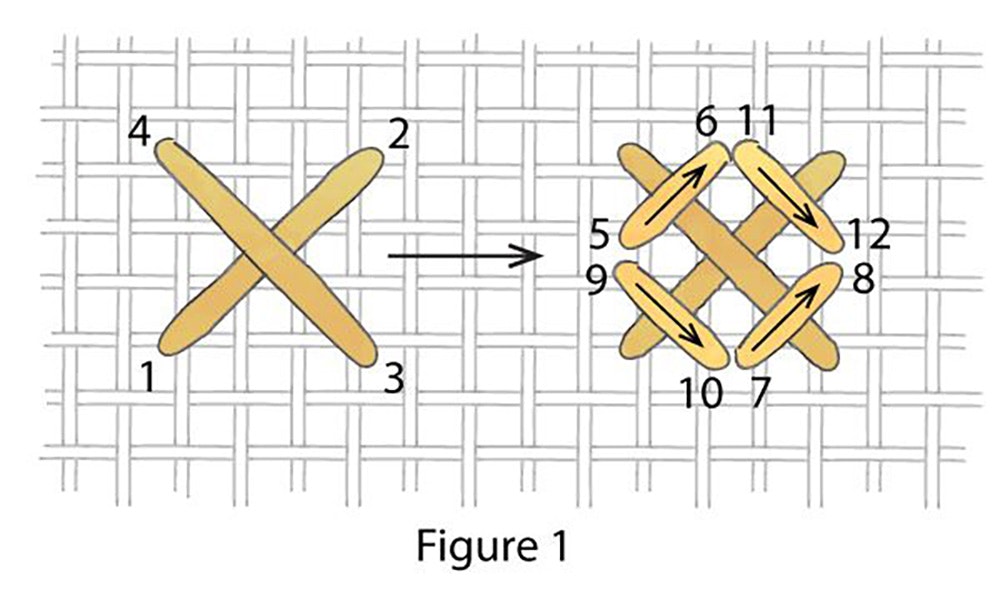
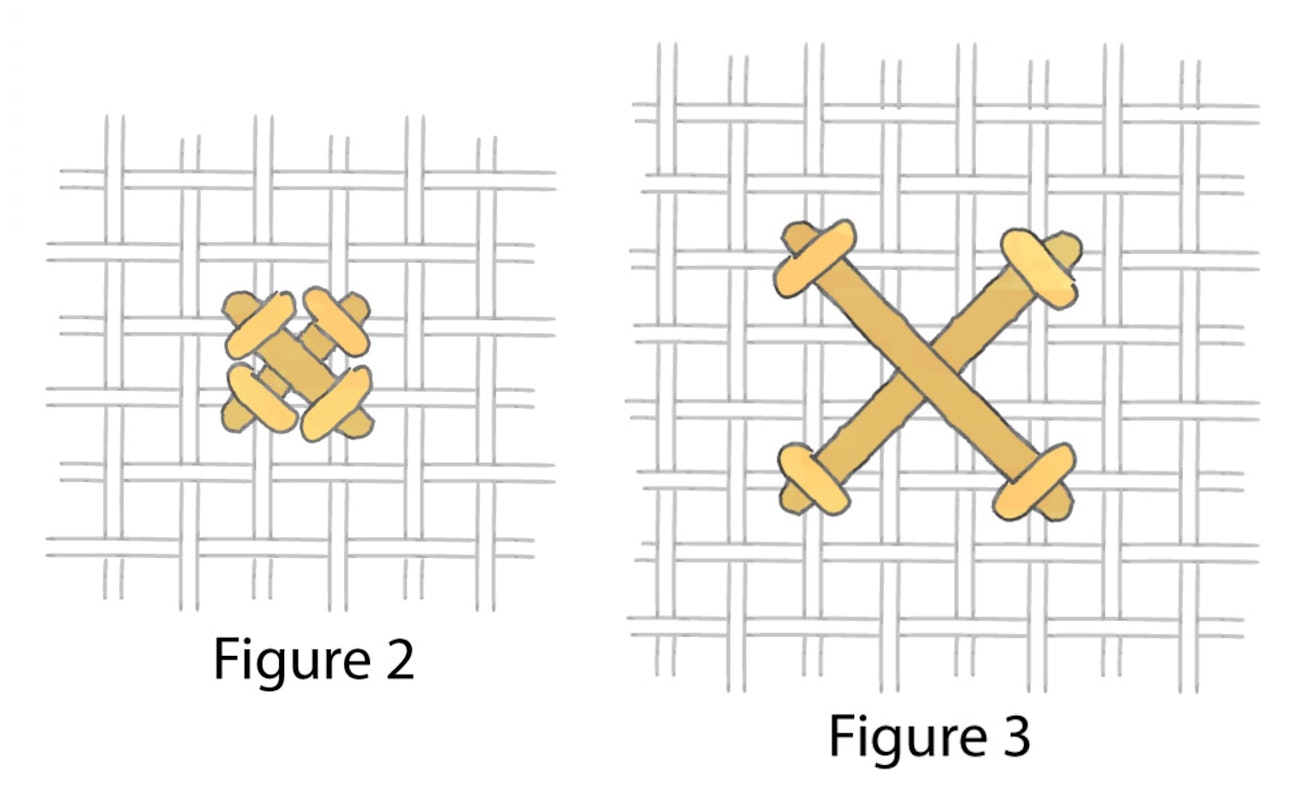
The rice stitch is composed of a basic square or rectangular cross stitch (Figures 1–7) or an upright cross stitch (Figures 8 and 9) of almost any size as the base component with smaller (usually), diagonal, tack-down stitches of varying lengths over the four cross-stitch legs for the top layer. These smaller stitches generally create a backstitched square centered over the cross stitch (Figures 1, 2, 4, 5, 8, and 9). There may be one to several of these tack-down stitches per leg. The doubled rice stitch appellation signifies that there are two tack-down stitches per leg (Figures 4, 7, and 9) and for the triple rice stitch, three tack-down stitches per leg (Figure 5).
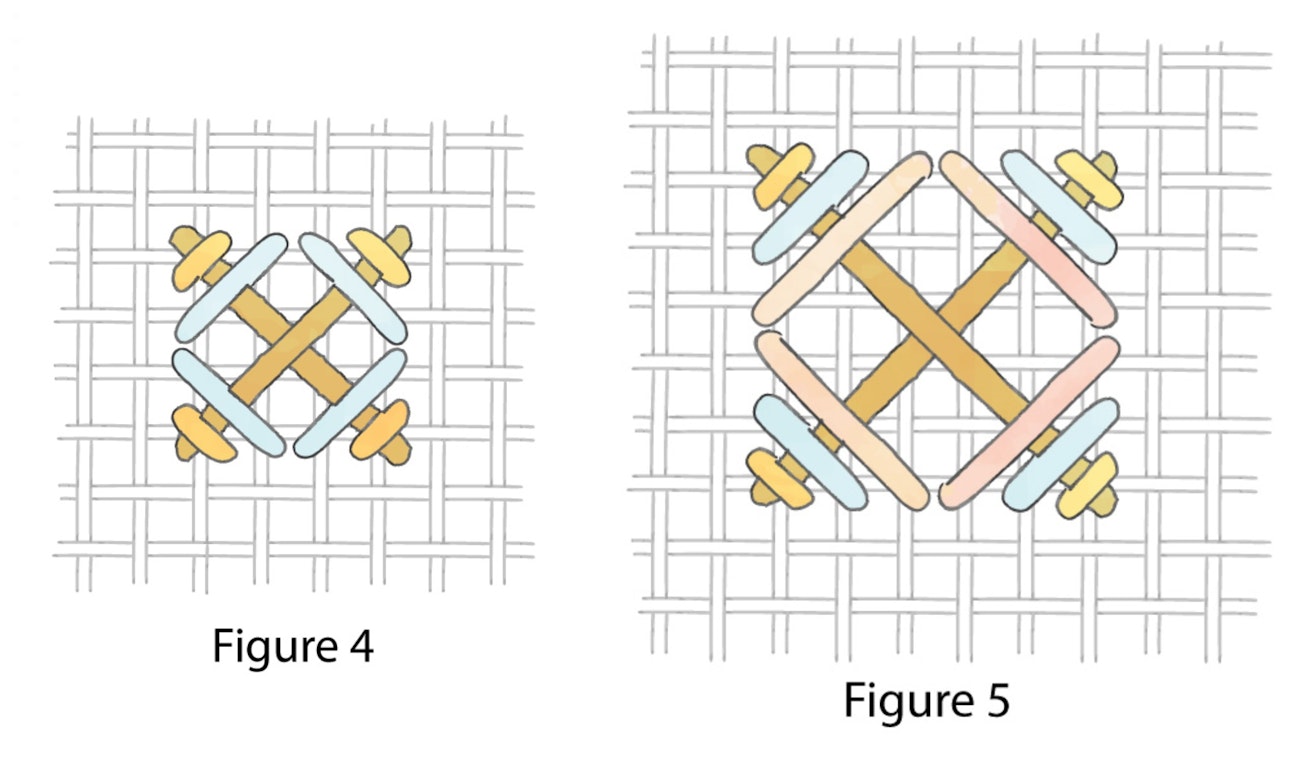
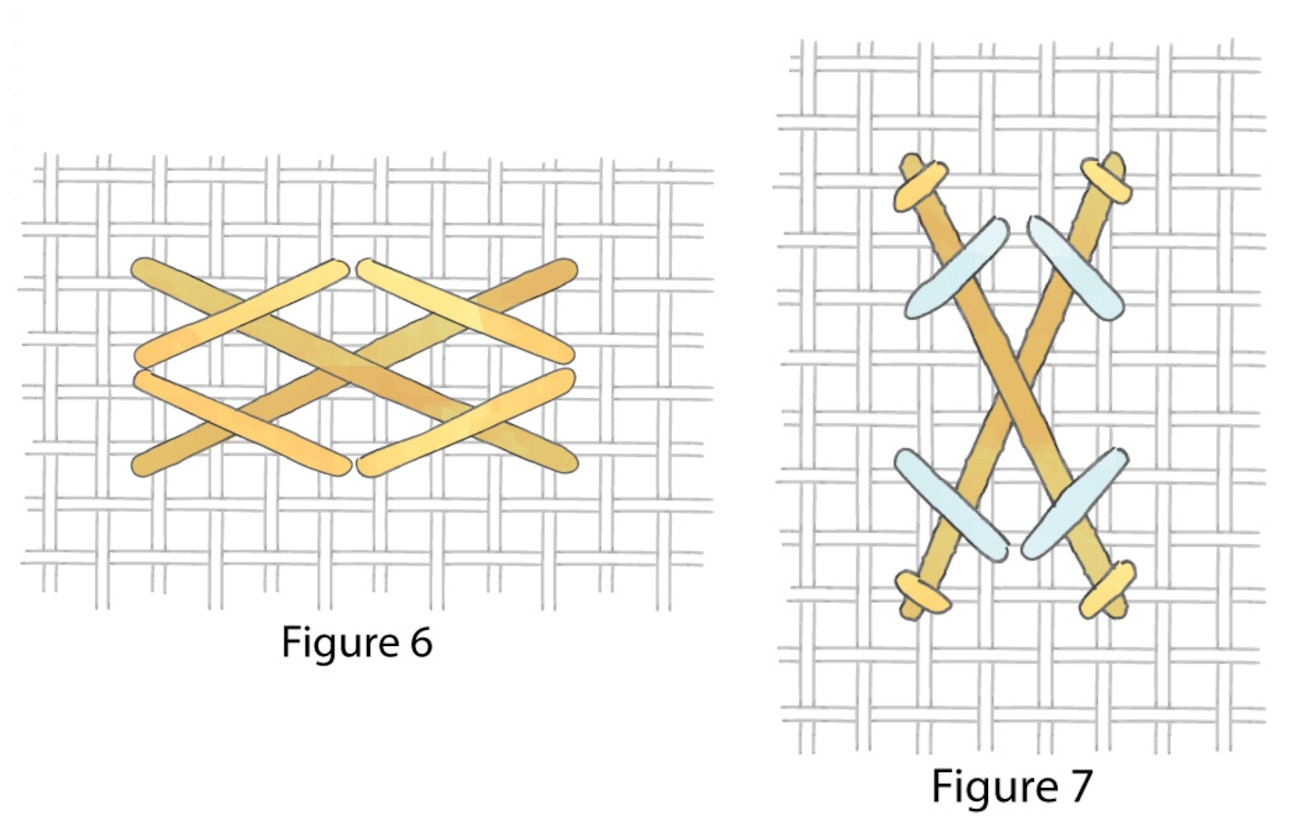
The base cross stitch may be worked in one color and/or one type of thread, and the top layer in another thread or color, which results in a multitude of different appearances and textures. The colors and thread types may be close in color, size, or texture or highly contrasted. A darker, thicker thread used for the cross-stitch component with a lighter colored, thinner thread for the top layer is one of the more pleasing combinations. This simple stitch is much easier worked on an even-weave fabric (linen, needlepoint canvas, or even plastic canvas); it has been sewn on plain fabric but with much less frequency and with less accuracy at keeping the stitch itself squared up. Adjust the thread and needle size to fit the background fabric.
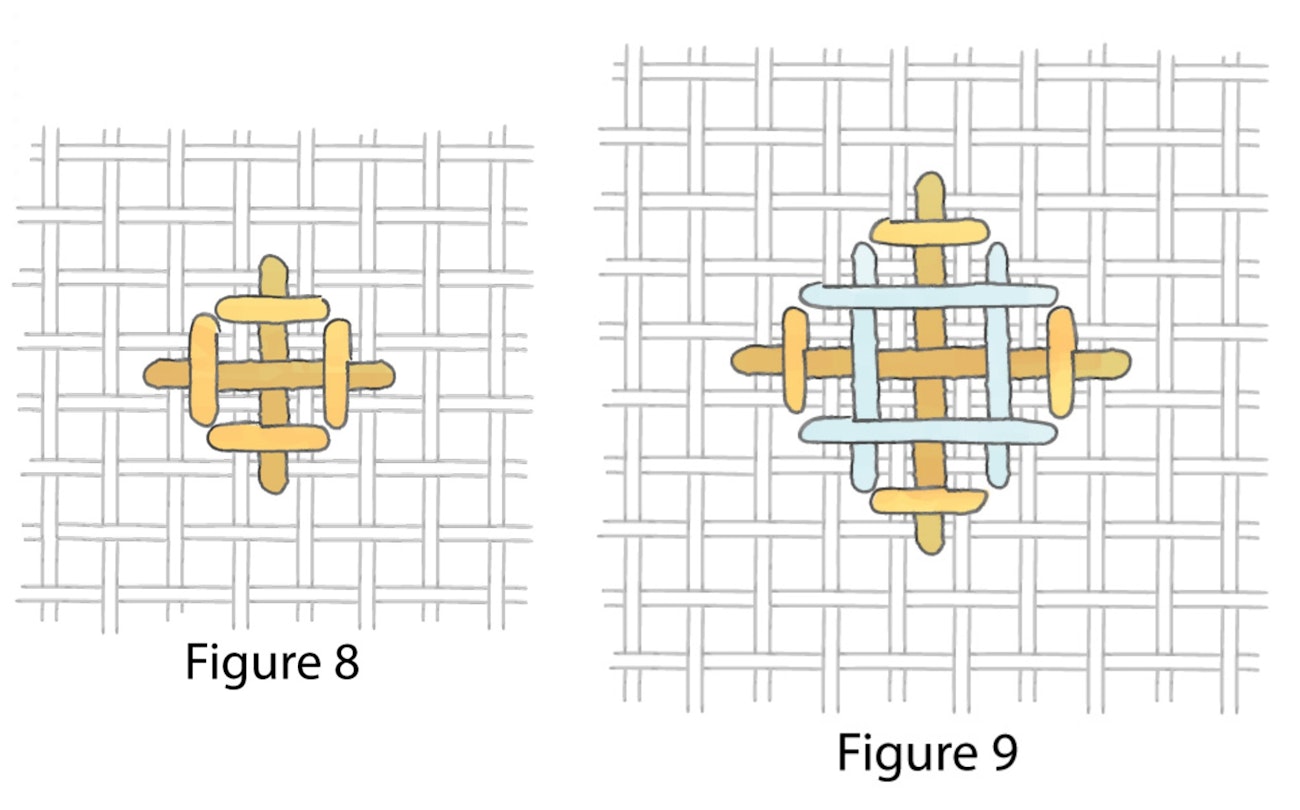
The rice stitch was and is used as a line, band, border, filling, background, or even as alphabet letters and numbers. Some students of the renowned Polly (Mary) Balch School (1785–1797) in Providence, Rhode Island, stitched a distinctive two-tone green border of rice stitches and with additional layout similarities that later allowed sampler scholar and author Betty Ring (Girlhood Embroidery: American Samplers & Pictorial Needlework, 1650–1850, Volumes 1 and 2, 1993) to identify and group these samplers as being from that particular school, designed by that particular instructress, and stitched by her students.
 Layers of stitching give depth to the rice stitch variations. Clockwise from top left: Figures 9, 4, 5, 6
Layers of stitching give depth to the rice stitch variations. Clockwise from top left: Figures 9, 4, 5, 6
Deanna Hall West is a former needlework technical editor for PieceWork and former editor of The Needleworker magazine.
Originally published June 26, 2018; updated October 31, 2022.

